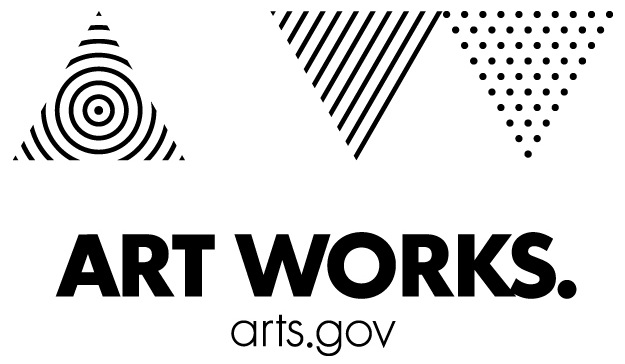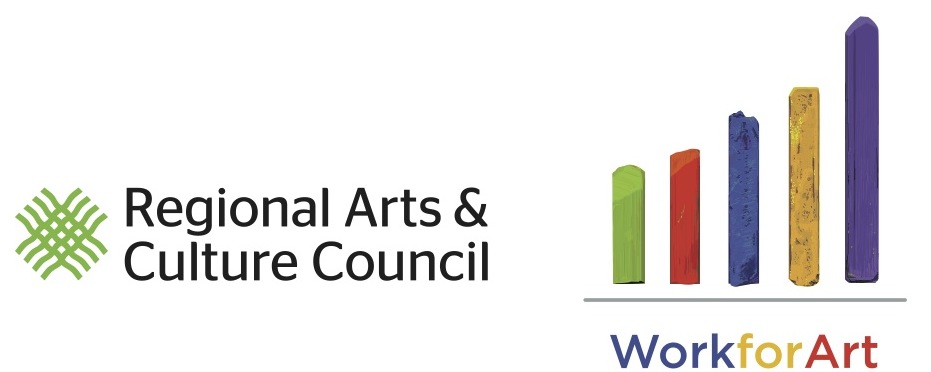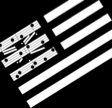CASCADIA COMPOSERS
present
In Just Spring...
March 18-19, 2011, Portland, Oregon
TWO DAYS, THREE CONCERTS
Concerts of contemporary classical concert hall music by composers
from around the country and the Cascadia region with guest musicians
plus FREE lecture-presentations by featured composers.
Review of Concert Three
Concert One
8:00 PM, Friday, March 18th, 2011
Lincoln Hall, Rm. 75
Portland State University
1620 SW Park Avenue
Portland, OR
$5 students, $10 Cascadia members/seniors, $15 artists, $20 regular, free for PSU students
SCHIZOMEZZO by Gary Noland (hear) (video)
Maria Choban - piano
The initial idea for Schizomezzo haunted me for over twenty-five years until I set it down in writing and developed it into a full-fledged
opuscule in the year 2006. Motivated in part by meetings and seminars with British composer Michael Finnissy (who is its dedicatee),
as well as by performances and recordings of his Verdi and Gershwin transcriptions, Schizomezzo sets off in a
harmonically functional idiom à la Brahms until liquefying into acid at its conclusion. Thus its title.
LOVE LOVE WIND DUST by Cynthia Gerdes (hear) (video)
Diane Chaplin - cello, Cary Lewis - piano
This music was inspired by our artist friend Jef Gunn's story about an old Chinese saying he'd come across. He explained "Love love"
means to be in love with, as in pay very close attention to. Wind is change. Dust can be an irritant. I'm not sure what the Chinese meant,
but his words blew around in my American sensorium enough to want to write this conversational piece for cello and piano.
THREE PIECES by Bill Whitley (hear) (video)
Barbara Heilmair - clarinet
Three Pieces for Solo Clarinet was written in the fall of 2001. These were spontaneous, un-commissioned, un-requested works that
seemed to come from nowhere. But looking back from 2010, I see that they encapsulate a lot of what I was feeling (what everyone was feeling)
in the fall of 2001: confusion, sadness, anger, disappointment... Each movement features one of the three primary ‘colors’ produced by the three
different registers of the clarinet, and each is a sonata-allegro form, where tiny gestural figures are used as themes.
CRETIAN LULLABY by Jay Derderian (hear) (video)
Stella Roshi-Moles - violin, Jay Derderian - piano
This piece is based off the first completely notated composition. It was discovered in 1883 by W.M Ramsey near Aydin Turkey
and has been dated to around 200 B.C. - 100 B.C. It is a Skolion by a Hellenistic poet named Seikilos to his deceased wife, Euterpe.
This type of song was typically sung at the end of a symposium, and the singer usually sung with a lyre. The original marble tombstone
uses Greek Notation which included letters, lines and dots above the letters indicating pitch and duration.
SONG'S TEXT (translation)
While you live, be happy [shine]
don't suffer [be sad] anything at all;
[because] life is short
and time demands its toll [time leads to death]
- I N T E R M I S S I O N -
TRIO (excerpt) by Mark Vigil (hear) (video)
Igor Shakhman - clarinet, Michael Hsu - violin,
Maria Choban - piano
Movement I represents my first attempt at composition after being out of the field of music for at least ten years. I was 36 years old.
I wrote this music during my first term of graduate school in the fall of 1991 at the University of Oregon School of Music. I remember that
my only concerns about composition were that the music should have a sense of spontaneity, innocence and clarity and that it should
only come from my heart.
DEVOTIONAL (excerpt) by Brent Weaver (hear) (video)
Diane Chaplin - cello, Cary Lewis - piano
Composed in 2006 for Cary and Dorothy Lewis, Devotional is a series of short prayers for cello and piano modeled on the
canonical hours of the monastic day, from Matins just before sunrise to Compline at night. Musically, they are a set of lyric pieces,
mostly tonal in style and simple in texture. They are dedicated to the performers and to Dr. Mary Oyer,
a beloved teacher of mine. Five of the seven movements are heard this evening.
Moments from “White blowing daffodil seeds” by Greg Steinke (hear) (video)
Casey Bozell - violin, Diane Chaplin - cello, Cary Lewis - piano
MOMENTS from White blowing daffodil seeds was written after a perusal of Riverbend, a literary journal published at Ball State
University wherein I found the poem used as a metaphor for this composition. The poem and the composition also serve as way of
honoring the memory of a very dear family friend, Virgil Adams, who passed away in November of 1992.
Movements based Upon:
*White blowing daffodil seeds catching on found dreams as the summer is ending.
Leaves fallen bury the dreams of long gone summer blanketing our fears of cold.
Oncoming winter beckons whispering white fear of the cold dark arriving
Springtime breaking free melts the frozen cage imprisoning light of hope.
A cycle never ending blissfully becomes a cycle ever being.
*Poetry by S. A. Marjason © 1992 by S. A. Marjason. All Rights Reserved.
Concert Two - NACUSA National Concert
3:00 PM, Saturday, March 19th, 2011
Lincoln Hall, Rm. 75
Portland State University
1620 SW Park Avenue
Portland, OR
$5 students, $10 Cascadia members/seniors, $15 artists, $20 regular, free for PSU students
SOLO LA SOMBRA by Joanne Carey (hear) (video)
Katherine Price - soprano, Jared Carlson - cello,
Genevieve Mason - piano
Solo La Sombra is the fourth in a series of songs Carey has written on Pablo Neruda texts. This song is based on
fragments whose vivid imagery suggested a range of musical phrases and textures, from the chromatic and
contrapuntal to the rhythmic and harmonic.
SOLILOQUY by Monica Lynn (hear) (video)
Todd Kuhns - clarinet
Soliloquy – The idea of solitude permeates this work, exploring the nature of conversation with oneself and the
inherent tendency to travel through repeating thought- loops, like well-worn grooves in an old phonograph record.
RAINFOREST by Mark Behm (hear) (video)
Matt Grossman - piano
Rainforest was composed 2005-2008 and is the second work in a book of five pieces for piano. The central idea of the
piece is one common in my music, of a single melodic line that extends throughout most of the work, but is surrounded by
complex ornamentation. The title alludes to the interesting cacophony one hears in a rainforest.
TRIO by John Winsor (hear) (video)
Todd Kuhns - clarinet, Justin Kagan - cello,
Ben Corbin - piano
Trio for Clarinet, Cello, and Piano resembles neoclassical works. It relies heavily on quartal harmony.
The first movement is moderately fast. The second is slow and contemplative.
The third is very fast and written in a driving 2+2+3 meter.
ON THE INTERPRETATION OF DREAM DANCES by Antonio Celaya (hear) (video)
Todd Kuhns - clarinet & bass clarinet, Lucia Conrad - violin,
Justin Kagan - cello, Matt Grossman - piano
Despite what our teachers tell us, music is not quite rational. So in recent years I have tried to mimic the form
(but not the content) of dreams. My hope is that I will find greater psychological resonance for my music. My music almost
always also carries a dance feeling. Mostly, I hope people have fun playing and listening to it.
- I N T E R M I S S I O N -
KEICHU'S WHEEL* by Andrew Allen (hear) (video)
Sarah Tiedemann - flute, Denise Fujikawa - harp I,
Catherine Stone - harp II, Florian Conzetti - percussion I,
Brian Gardiner - percussion II, David De Lyser - conductor
Getsuan said to his students, “Keichu, the first wheel-maker in China, made two wheels having fifty spokes each.
Suppose you took a wheel and removed the nave uniting the spokes. What would become of the wheel? If Keichu had done so,
could he be called the master wheel-maker?” “Keichu's Wheel”, from The Gateless Gate
SONATINA by John Bilotta (hear) (video)
Gabriel Neves Coelho - piano
Sonatina is a brief work in three movements, all of which are either atonal or twelve-tone. It was written for a friend
with the intent of providing a short contemporary sonata to pair in recital with one of the many more traditional
sonatinas from the piano literature.
TESLA'S PIGEON by Melissa Dunphy (hear) (video)
Katherine Price - soprano, Genevieve Mason - piano
In the 1930's and 40's, Serbian-American scientist and inventor Nikola Tesla lived out his twilight years having
metaphorically wrecked himself on Manhattan Island, bankrupted and broken by a public relations war with Thomas Edison.
A staunch believer in the connection between his genius and sexual abstinence, Tesla shunned women, choosing instead to
feed and care for pigeons in his hotel room at the New Yorker. His closest friend was a white dove that visited him every day
at his hotel room window. In moments of delirium, Tesla believed this pigeon to have mystical knowledge and the ability to
communicate with him, and declared to friends that he was in love with her. One night, the bird flew into Tesla's room close to
death, and according to Tesla, a light came from her eyes more intense than that of the most powerful lamps in his laboratory
before she died in his arms. Tesla said that at that same moment, he knew his life's work was finished. "Tesla's Pigeon" is
sung from the dove's perspective in these final moments, and explores parallels between the relationship between Tesla
and his pigeon and Prospero and Ariel in Shakespeare's The Tempest, with text adapted from Ariel's
songs, Goethe's Faust, the poetry of George Sylvester Viereck, Serbian traditional song and poetry,
and personal letters to Tesla.
* NACUSA Student Competition Winner
Concert Three
8:00 PM, Saturday, March 19th, 2011
Lincoln Hall, Rm. 75
Portland State University
1620 SW Park Avenue
Portland, OR
$5 students, $10 Cascadia members/seniors, $15 artists, $20 regular, free for PSU students
GRAVITATIONS by Michael Johanson (hear) (video)
Barbara Heilmair, clarinet
Gravitations explores various aspects of musical motion, especially the idea of moving to and away from central focal points.
Although the application of this idea as it relates to the element of pitch is perhaps one of the more obvious manifestations
of this concept, the idea is applied to other musical parameters as well.
In addition to pitch, the work explores this idea in the contexts of register, rates of motion, rhythm/meter
(pulsed versus non-pulsed musical gestures), the use of long, sustained tones versus angular, athletic passages, conjunct
versus disjunct motion, and moods that vary from serene and introspective to angular and strident, playful and athletic.
The dramatic shape of the work is largely determined by the various ways in which these contrasting elements interact.
ELEGY (ON A THEME BY JEAN SIBELIUS) by Jack Gabel (hear) (video)
Diane Chaplin - cello
Elegy
Hands can say a lot,
can speak through simple things:
wood, cotton and cloth
can give a certain comfort.
I can say my dad
was a man of big hands...
all he took and all he gave
was with big hands.
JUXTAPOSITIONS by Art Resnick (hear) (video)
Michael Hsu - violin, Maria Choban - piano
This piece was written to examine the effects of improvisation in one instrument against written parts in the other as well as
some simultaneous improvisation. The improv is directed (ie. the composer dictates the texture and shape of the improv
but the length of the sections are up to the performer).
WISCONSIN AIR by Dan Senn (see video)
video and pre-recorded sound
This piece, like so many video works of mine, resulted from an unplanned moment. I was on a lecture-performance tour in the
midwest and had a few days to visit my childhood home, in Watertown, Wisconsin, where both my parents were still living. And while
having breakfast in the kitchen of this old, tumbling down house, I noticed two objects lying in the back yard which, because of the context,
I did not at first recognize. After going out and inspecting them, and finding them unusually beautiful in the warm autumn light and leaves,
I decided to do a close up mapping of their textures and colors on video. Exactly how I would process and use the footage, I was not sure. This
decision was not without some brief hesitation, in this small conservative German community, as the backyards are open and without
fences here. My parents would certainly hear about it. But time and experience had jaded my social sensitivity and as neighbors
peered from doors and windows, as I circled the old bathtub and sink of my childhood, I was mostly lost in the world
I had left this one for.
The pre-recorded sounds for this piece are vocal and then of me performing my sculptural instruments. DS
- I N T E R M I S S I O N -
DEVIL’S LAKE by David Drexler (hear) (video)
Barbara Heilmair - clarinet, Lucia Conrad - violin,
Diane Chaplin - cello, Ben Corbin - piano
The Standard Atlas and Gazeteer of the World (1890) describes “the weird beauty of Devil's Lake,” which lies between three 500-foot
bluffs just south of Baraboo, Wisconsin. “Here, in a tremendous gorge... hemmed in on all sides by frowning rocks, of prodigious size,
piled up in every conceivable form, nestles one of the loveliest sheets of water in the whole world.” The evocative name “Devil's Lake”
has stuck even though the original Ho-Chunk name is better translated as “Spirit Lake” or “Sacred Lake.”The piece, in one movement divided
into three sections, is a slow-motion meditation on the “weird beauty” of the place. The first section gradually piles up large chords in the piano,
while the other instruments imitate some of the many bird songs heard around the lake. The second section gets a little more lively
(perhaps reflecting some of the human tourist activity) but is interrupted several times by the string instruments chirping like a
chorus of frogs. The final section features a slow clarinet melody inspired by the graceful upward spirals of
turkey vultures soaring above the water.
FOLK DANCE, Op. 132 by Tomas Svoboda (hear) (video)
Barbara Heilmair - clarinet
This is a farewell gesture to the old Moravian Folk Festival in Straznice, in Prague. The light, happy, though little nostalgic F-major dance
recalls the music shared among Moravian artists, in particular the composer’s friend, clarinetist Josef Krcek of the renowned ensemble,
Musica Bohemica, to whom the work is dedicated. Musica Bohemica’s performances at the Folk Festival in Straznice are legendary for their
renditions of numerous masterful arrangements of Czech/Slovak folk music. This one movement dance displays its swinging gesture
and large melodic intervals as well suited for clarinet. The melody is propelled through its simple dance
form by the underlying excitement of a heavily syncopated folk rhythm.
PETITE SUITE CHROMATIQUE by David Bernstein (hear) (video)
Diane Chaplin - cello, Susan DeWitt Smith - piano
This five movement work is exactly what the title suggests: an overall piece that is generally chromatic throughout and one which
exploits the color and virtuosic possibilities of both instruments. In writing a piece of this nature, I wanted to create a dialogue
between and among two instrumentalists that are at times argumentative, playful, witty, and above all rhythmically dynamic for
both players. The moods from one movement to another are varied and the differences between them are usually rhythmically
differentiated from one another. The underlying harmonic aspect of its chromaticism unifies all aspects of the composition.
Symposia Schedule
All sessons held at:
Lincoln Hall, Rm. 225
Portland State University
1620 SW Park Avenue
Portland, OR
Day One: Friday - March 18
1:00-1:50 pm - Gary Noland (Postludes & Interludes)
2:00-2:50 pm - Susan Alexjander (Music of the Atomic World: Invisible Whispers Within)
4:00-4:50 pm - Greg Steinke (Music and the Poetry of Lawson Fusao Inada)
5:00-5:50 pm - David S. Bernstein (The challenge of Writing for Strings)
Day Two: Saturday - March 19
10:00 am-10:50 am - Drew Allen (Absurdity, Fluxus and Free Improvisation)
11:00-11:50 am - Melissa Dunphy (New Music: the link to Extra-Musical Subjects)
12:00 noon - lunch
1:30-2:20 pm - Jack Gabel and Agnieszka Laska (Choreographer-Composer Collaboration)



 NACUSA
NACUSACascadia Composers Site
Cascadia Facebook
